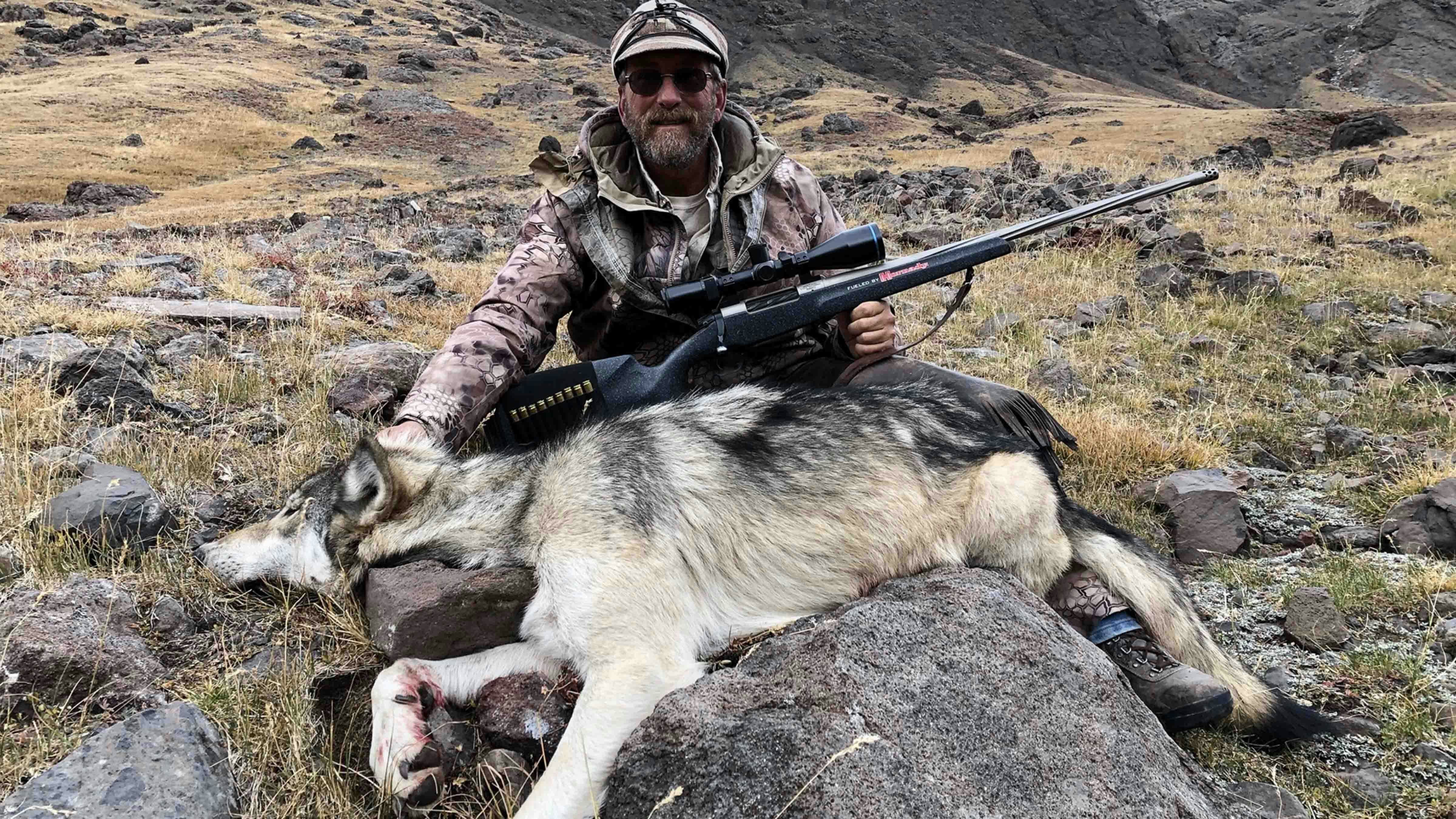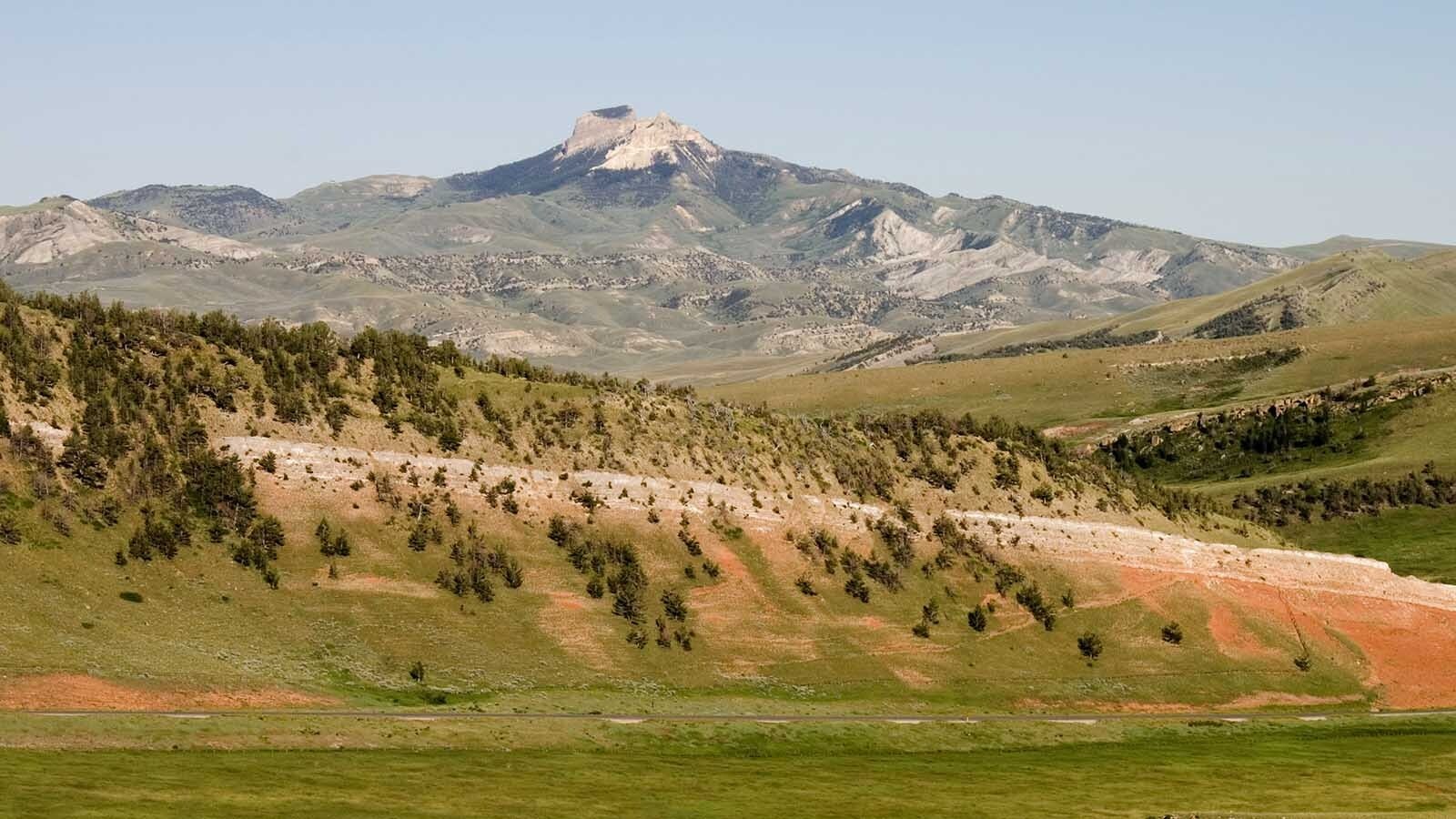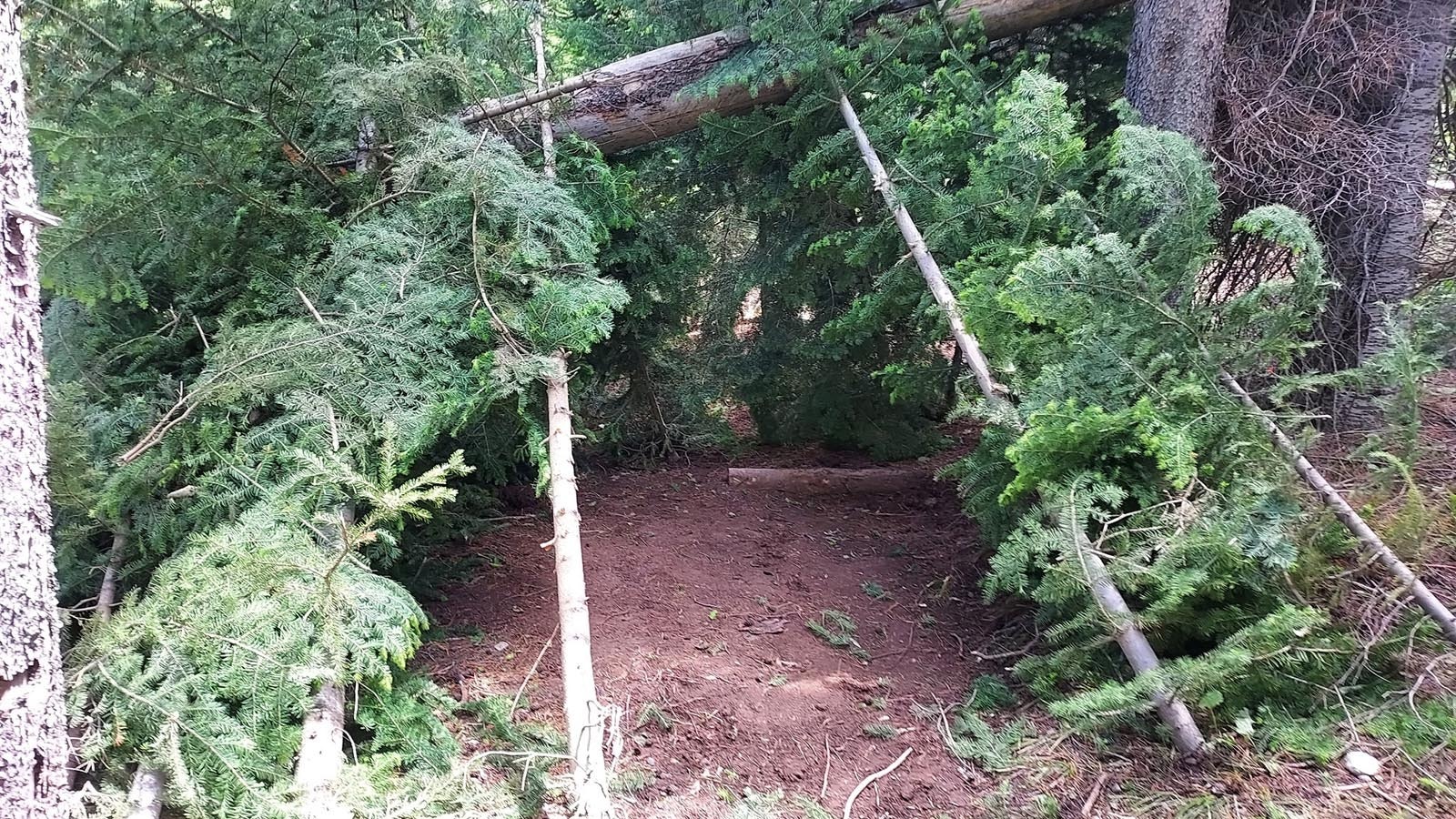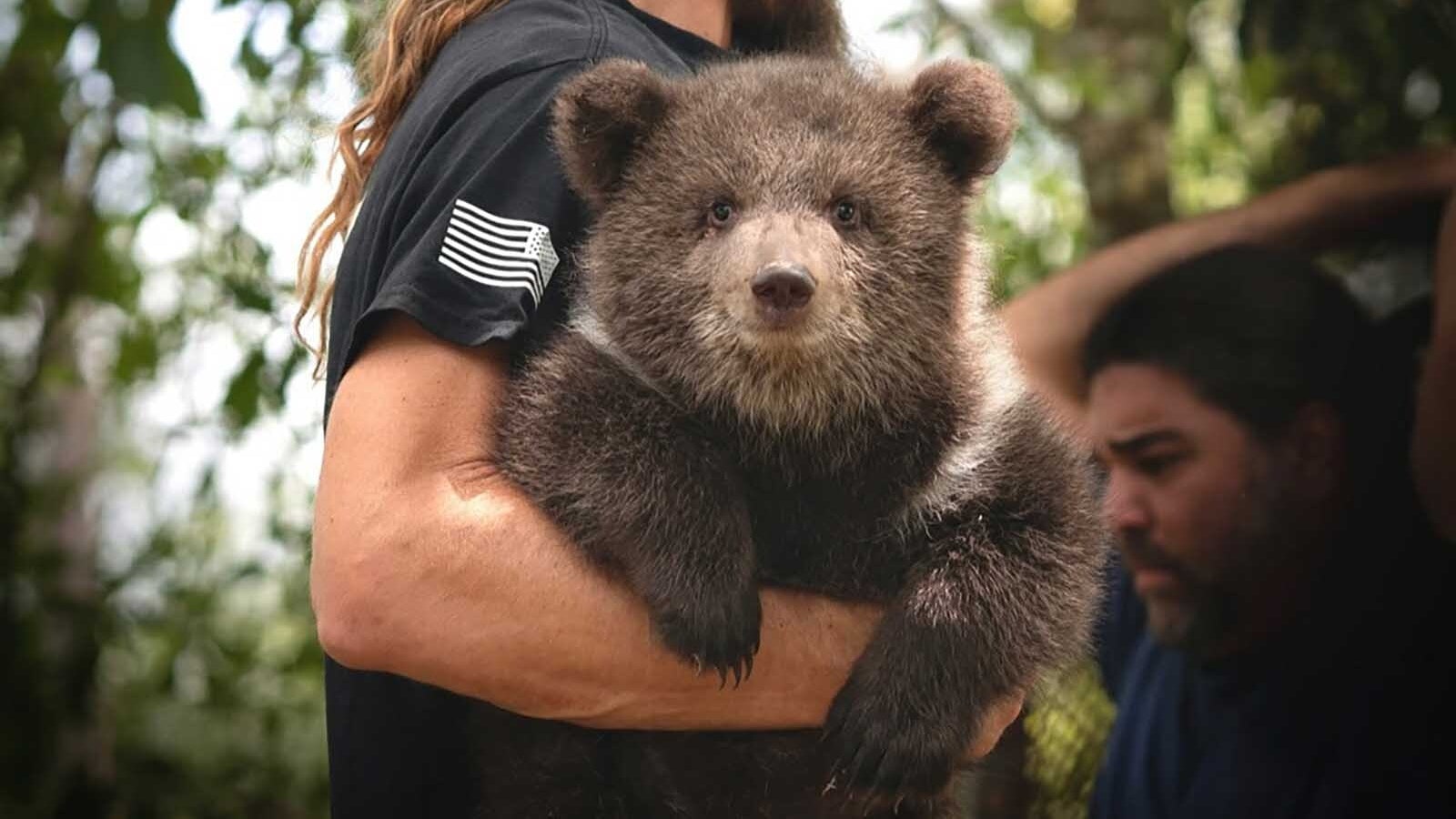There’s no telling when wolves from Colorado will cross the state line into Wyoming. But it’s bound to happen, and it could happen soon, a wolf watcher said.
“If I had a crystal ball, what do I think? I think that sometime within the next four to six weeks, we’ll have one cross, or maybe a couple cross over,” Colorado resident John Michael Williams said.
“And I think we’ll see some of them getting shot,” he added.
Wolf Tracker
Williams is a Colorado native who lives in the Colorado Springs area. He recently founded and administers the “Colorado Wolf Tracker” Facebook page, which quickly gained thousands of followers.
It’s become a clearinghouse for information and lively discussions (and sometimes heated debates) regarding ten wolves that were reintroduced into Colorado in December.
Williams credits pressure from the public for the Colorado Parks and Wildlife (CPW) Department agreeing to routinely release maps of the wolves’ whereabouts.
Maps Give A Broad Picture
Those maps are frequently posted on the wolf tracker page. And the most recent maps indicate that wolves have been moving into Jackson County, Colorado, near the state line in the Walden, Colorado area.
The CPW maps are somewhat vague, Williams said. If a wolf’s radio collar indicates it traveled into a certain drainage, “they just mark that entire drainage as being the wolf’s territory,” he said.
He’d like to see Colorado follow the practices of other states, such as New Mexico, which offer maps showing the exact location of wolf collar “pings,” Williams said.
CPW officials have expressed worry that releasing the wolves’ precise locations might make them more vulnerable to wolf-haters trying to kill them, Williams said.
But he doesn’t think that’s a legitimate fear.
“I really don’t think that would happen,” he said.

Not The First Wolves There
Jackson County, Colorado isn’t unfamiliar with wolves. The now defunct North Park Pack – which pre-dated the official wolf reintroduction – was active there.
That pack was formed around 2020 by wolves that filtered into Colorado from Wyoming on their own. The pack was blamed for killing numerous livestock animals and dogs in Jackson County.
The North Park pack eventually split up and effectively ceased to exist last year. It’s thought that at least some of its members wandered back into Wyoming and were shot by hunters.
Meanwhile Colorado’s wolf reintroduction program was initiated by Proposition 114, which voters passed in 2020 by the slimmest of margins, 50.91% to 49.09%.
Wyoming Gov. Mark Gordon flatly refused to provide any wolves for Colorado’s reintroduction.
And after Montana and Idaho also turned down requests for wolves, Oregon offered to give Colorado some of its wolves.
In December, Colorado Parks and Wildlife agents released 10 wolves brought in from Oregon at undisclosed remote locations in Grand and Summit counties in northern Colorado.
Rural Vs. Metro
For the foreseeable future, Colorado’s wolves will remain under endangered species protection in Colorado. They may not be shot or trapped by the public. And officials are still trying to hammer out the details of what circumstances might prompt game agents to kill wolves for preying on livestock.
There’s yet to be an official definition of what would be considered “chronic depredation” of livestock – which might prompt lethal wolf control, Williams said.
He said that has many Colorado residents frustrated, particularly in light of the fact that some of the reintroduced wolves came from Oregon packs with a history of attacking livestock.
It’s part of a larger pattern of rural, Western Slope residents feeling that the wolves were pushed on them by Colorado’s metropolitan Front Range, which voted heavily in favor of wolf reintroduction, he said.
William’s family roots in Colorado go back to “before it was even a state,” he said. He knows some ranchers and also likes to hunt in the region of Colorado where the wolves were released. And he said he’s noticed a steady change toward urban interests trumping rural interests over the past several decades.
A Deadly State Line Crossing
Wyoming’s wolf management policy is the polar opposite of Colorado’s. The region along the Colorado state line is part of Wyoming’s “predator zone” for wolves. The predator zone includes about 85% of Wyoming outside of Grand Teton and Yellowstone national parks.
And in that zone, wolves may be shot or trapped at any time, with no license required and no bag limits.
That’s why Williams and many others in Colorado think it’s inevitable that at least some of Colorado’s wolves will wander across the state line and get killed in Wyoming.
But he doesn’t think the Centennial State’s wolves will get wiped out that way.
“The wolves aren’t going to go away. They aren’t all going to cross into Wyoming and get killed. The ranchers are going to have to figure out how to deal with it,” he said.
So as he sees it, Colorado’s state government is going to have to step up and provide better support for ranchers.
For example, instead of just recommending that ranchers employ range riders to keep an eye on cattle and chase wolves away, the state should put up funds to help small, family ranches hire those range riders, he said.
Trying To Stay Neutral
Williams said he invites people with all points of view to visit and post on the Colorado Wolf Tracker page, and kicks people off only when a clash of opinions gets nasty.
“I’ve banned people from both ends of the spectrum,” he said.
He also asks that people back up their claims.
“If you come on my page saying, ‘Well, studies show that all wolves are bad and we should get rid of them’, I’ll tell you, ‘Well, show me the study.’”
For now, Williams thinks that much of Colorado is still in a “honeymoon phase” with the wolves.
Deep snow is keeping large crowds away from the backcountry. But with the arrival of warmer weather, there might be some trouble, such as hiker’s dogs being killed by wolves “because people like to let their dogs run off-leash on the national forests,” he said.
And Colorado’s hunting seasons are also sure to bring more conflicts, he added.
Mark Heinz can be reached at mark@cowboystatedaily.com.





